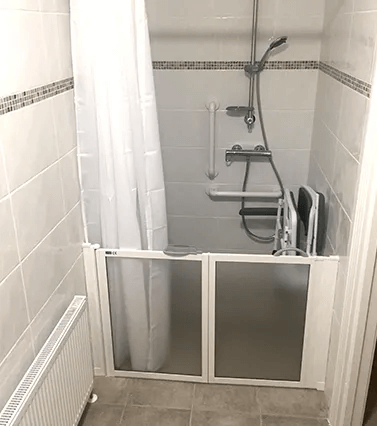Choosing the right mobility aid can transform daily life for those with reduced mobility. Whether you’re shopping for yourself or a loved one, understanding the options available helps you make an informed decision that promotes independence and safety at home.
Mobility Scooters
Mobility scooters remain the most popular choice for outdoor independence in 2025. Modern models offer impressive range and features tailored to different needs. Compact scooters suit short trips to local shops, while robust models with extended battery life handle longer journeys with ease. Today’s scooters include advanced features like LED lighting, comfortable suspension, and weather-resistant designs that make them practical year-round.
Stairlifts
Stairlifts are essential for maintaining independence in multi-story homes. Available in both straight and curved configurations, they’re designed to fit virtually any staircase layout. Straight stairlifts work perfectly for homes with standard staircases, while curved models navigate bends, landings, and turns seamlessly. Modern stairlifts feature smooth operation, safety sensors, and compact folding designs that don’t obstruct the stairs when not in use. Medical professionals consistently recommend them as one of the safest ways to prevent falls and injuries at home.
Rise-and-Recline Chairs
Rise-and-recline chairs combine comfort with practical assistance. These specialized armchairs gently tilt forward to help users stand up without strain, and recline to support relaxation with adjustable leg rests. Available in various fabrics, colors, and sizes, they integrate beautifully into any living room while providing essential support. Many models now include heat and massage functions, USB charging ports, and memory settings for personalized comfort.
Grab Rails and Bathroom Safety
Grab rails are simple yet potentially life-saving additions to any home. Strategically placed in bathrooms beside toilets, showers, and baths, they provide crucial support for maintaining balance and preventing falls. Modern grab rails come in various finishes to match bathroom décor while meeting safety standards. They’re particularly valuable for shower independence, allowing users to wash safely without assistance.
Other Essential Aids
- Walking Frames and Rollators: Provide stable support for indoor and outdoor mobility with options for seats and storage baskets.
- Profiling Beds: Adjustable beds that reduce strain when getting in and out while offering comfortable positioning for reading or watching TV.
- Portable Ramps: Enable wheelchair and scooter users to navigate steps and thresholds safely.
Making Your Decision
Consider these factors when choosing a mobility aid:
Assessment Needs: Consult with occupational therapists or healthcare professionals to identify specific requirements.
Home Layout: Measure spaces carefully and consider how the aid will fit into your daily routines.
Future Planning: Choose solutions that can adapt as mobility needs change over time.
Budget: Factor in installation, maintenance, and running costs alongside the initial purchase price.
Ready to improve mobility and independence at home? Contact Irish Stairlifts today for expert advice on choosing the right disability aid for your needs. Call +353 45 892696 or visit our showroom to see our full range of mobility solutions. Our team provides free home assessments, quotation, and competitive pricing across Ireland.

Take the First Step to Independence
Trusted Mobility & Grant Experts Since 1999
Book Your Free Home AssessmentISB Mobility Showroom – Clane
Unit C5/C6 Clane Business Park
Kilcock Road, Clane, Co. Kildare
Eircode: W91 NF86
045 892 696 |
0818 818 500
showroom@irishstairlifts.ie
Mon–Thu: 9am–5pm | Fri: 9am–4pm
Dublin Office
6 Trinity St, Dublin 2
D02 EY47
01 616 7079
info@irishstairlifts.ie
By appointment only




